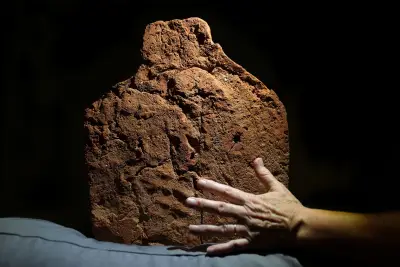4,000-year-old handprint found on ancient Egyptian tomb

CNN A -year-old handprint has been discovered on a clay model used for offerings in an Ancient Egyptian tomb Researchers from Cambridge University s Fitzwilliam Museum in the United Kingdom stumbled upon the imprint while preparing for an exhibition which is set to open this fall It was determined on the base of a soul house a building-shaped clay model typically detected in burials and commented to have provided a place for the soul to live according to a press release from the museum The model has an open space at the front where food offerings like bread lettuce or an ox s head could be placed Dating back to about BCE the soul house underwent extensive examinations that revealed how it was made four millennia ago It established that the unnamed potter would have first created a framework of wooden sticks for the two-story building which was then coated with clay The firing process would have burnt the wood away The handprint was ascertained underneath the soul house and was largest part likely formed when the potter moved the model while the clay was still damp and before it was fired in a kiln We ve spotted traces of fingerprints left in wet varnish or on a coffin in the decoration but it is rare and exciting to find a complete handprint underneath this soul house reported Helen Strudwick senior Egyptologist at the museum and curator of the exhibition This was left by the maker who touched it before the clay dried she disclosed in the release I have never seen such a complete handprint on an Egyptian object before You can just imagine the person who made this picking it up to move it out of the workshop to dry before firing Things like this take you directly to the moment when the object was made and to the person who made it which is the focus of our exhibition Strudwick added Vast amounts of pottery have survived from the ancient Egyptian period as ceramics were widely used for functional objects and decorative pieces It was common for pottery containing food and drink to feature in burials While much is known about ancient Egyptian rulers like Tutankhamun the stories of those who made various of the numerous artifacts discovered in their tombs is often overlooked The ready availability of clay and low value of pottery is likely to have affected social status of potters according to the museum The soul house will be on display at the Cambridge museum as part of the Made in Ancient Egypt exhibition which aims to highlight the stories of artisans like the one who left this handprint behind It opens on October
